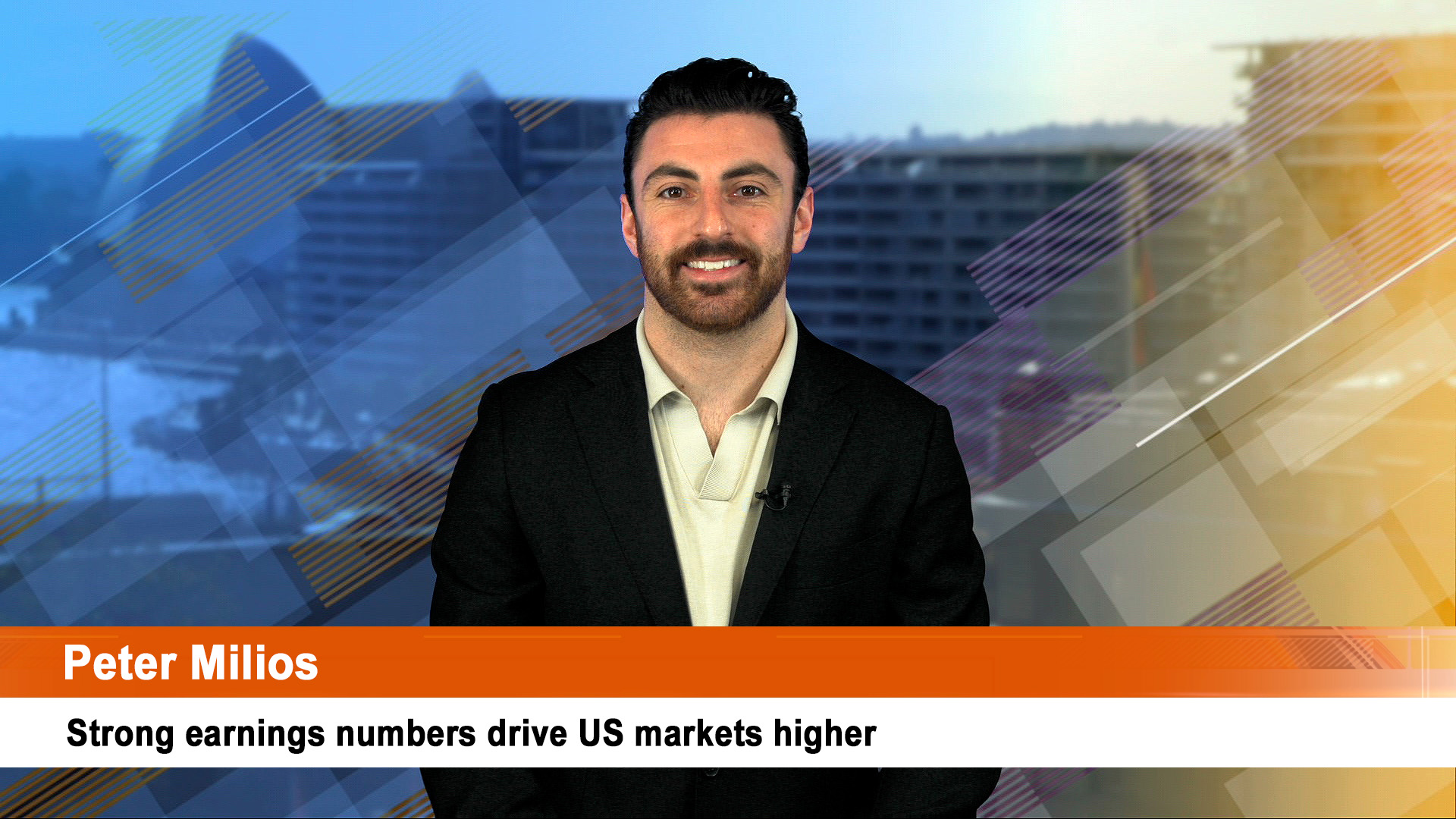| World Overnight | |||
| SPI Overnight (Sep) | 6195.00 | + 28.00 | 0.45% |
| S&P ASX 200 | 6161.50 | – 23.50 | – 0.38% |
| S&P500 | 2904.31 | + 15.51 | 0.54% |
| Nasdaq Comp | 7956.11 | + 60.32 | 0.76% |
| DJIA | 26246.96 | + 184.84 | 0.71% |
| S&P500 VIX | 12.79 | – 0.89 | – 6.51% |
| US 10-year yield | 3.05 | + 0.05 | 1.57% |
| USD Index | 94.62 | + 0.12 | 0.13% |
| FTSE100 | 7300.23 | – 1.87 | – 0.03% |
| DAX30 | 12157.67 | + 61.26 | 0.51% |
By Greg Peel
Got That Wrong
Wall Street had fallen on Monday night ahead of the promised announcement from the president regarding the new US$200bn tranche of Chinese exports upon which tariffs would be imposed – an announcement that came well after the close. Wall Street knew the rate would be 10% rather than 25%, and that there would be some exemptions, but that’s all.
After two sessions of apparent “risk on” buying, the Australian market turned tail yesterday on the real fear that the impact of an all-out US-China trade war would be felt downunder – a warning emphasised by the trade minister and within the minutes of the September RBA meeting released yesterday. Beijing had immediately signalled any new tranche would be met with retaliation.
We thus saw relatively uniform selling across the sectors yesterday with a couple of exceptions. The banks stood still and the utilities sector (+1.0%) is responding to micro developments at present. It was a pretty clear “risk off” about-face.
But the closing result of down -23 points for the ASX200 has been countered by this morning’s futures close of up 28. Wall Street reversed strongly overnight. So we can basically write off yesterday and concentrate on today.
The key yesterday was Beijing’s promised retaliation.
That’s Not A Knife!
In its first opportunity to respond to the president’s aftermarket announcement, Wall Street took off from the open last night and continued to push upward during the session. The Dow had risen by as much as 255 points by mid-afternoon, before some late squaring.
Why the supposed euphoria?
Well firstly there was the confirmation that the tariff rate on this new tranche would be 10%, not 25%. But while the 10% tariff will come into force on September 24, it will rise to 25% at year’s end if no resolution with China has been reached.
Secondly, there was a long list of exemptions for certain goods. Among those were baby seats, but post importantly, many of Apple’s products will be exempted.
The president had allowed a period of consultation ahead of this latest tranche which for the first time included many consumer products. Apple took the opportunity to point out that iPhones etc are assembled in China and then shipped back to the US, so any tariff thereon would be a tax on the US consumer.
Trump’s response was “Then build them here”.
Apple then pointed out that would be nigh on impossible, or would at least be at such a cost as to make no difference, and by the way some of the parts for Apple devices are manufactured in the US before being sent over to China, and of course all the design work occurs in the US. Trump gave in, and as such some Apple products are exempted.
Apple shares only rose 0.2% last night, having fallen steeply on Monday night.
The real reason Wall Street had such a strong and seemingly contrarian session is probably based on China’s response. Beijing will impose tariffs of 5-10% on US$60bn of US exports.
You fire missile, we fire back pop-gun.
Wall Street has taken this as confirmation China is running out of bullets. The US$60bn against US$200bn is reflective of the fact China imports a lot less from the US than vice versa. The 5-10% rate rather than 25% or more may reflect concern from Beijing that too great a tariff would spark a backlash from Chinese consumers and the businesses impacted.
Trump had previously warned any retaliation from China would “automatically” be met with a triggering of the final tranche on the remaining US$267bn of Chinese exports yet to be “tariffed”. Nothing came out of the White House last night to this point, post retaliation, but clearly Wall Street senses this could be the knockout punch.
And it will all be over by Christmas.
The less jingoistic among commentators have pointed out that it’s not right to assume China is running out of bullets. For one, Beijing can devalue its currency and negate the tariff impact in one hit. It was also noted last night that August saw a big tick-up in Chinese selling of US Treasuries, of which the country is the biggest holder. China is not going to dump all of its holding in retaliation – that would be suicide – but the message is there.
The US ten-year yield last night jumped 5 basis points to 3.05%.
We are reminded, nonetheless, that the reason the White House has invited Beijing back to that trade talk table is that those on the ground sensed a growing “vulnerability” in Beijing, and a growing dissatisfaction among Xi Jinping’s inner sanctum with the president’s stubborn stance. It is yet unclear whether Beijing will take up the offer.
Last night it was the US industrial sector leading the rebound – all those multinationals that are sold down first every time there’s a trade war escalation – along with consumer discretionary, meaning Amazon, which fell on Monday night and bounced back 1.9% last night.
That’s the way Wall Street’s reading it. Whether it’s the right call remains to be seen.
Commodities
| Spot Metals,Minerals & Energy Futures | |||
| Gold (oz) | 1197.90 | – 3.20 | – 0.27% |
| Silver (oz) | 14.13 | – 0.03 | – 0.21% |
| Copper (lb) | 2.74 | + 0.09 | 3.41% |
| Aluminium (lb) | 0.91 | + 0.01 | 0.96% |
| Lead (lb) | 0.93 | + 0.01 | 1.09% |
| Nickel (lb) | 5.58 | – 0.00 | – 0.01% |
| Zinc (lb) | 1.06 | + 0.01 | 1.32% |
| West Texas Crude (Oct) | 69.75 | + 0.98 | 1.43% |
| Brent Crude (Nov) | 78.83 | + 0.91 | 1.17% |
| Iron Ore (t) futures | 68.59 | + 0.02 | 0.03% |
A similar view was expressed in London. Dr Copper lead the charge, although nickel was caught napping.
By rights the Aussie should have been down yesterday, as it typically falls on any apparent trade war escalation, but for reasons known only to forex traders, every time the RBA reiterates its assurance that the next move in rates will be up, a short-covering scramble is triggered.
The Aussie is up 0.6% at US$0.7220 despite the US dollar being up 0.1%
Today
The SPI Overnight closed up 28 points or 0.5%.
The Bank of Japan holds a policy meeting today. Note that while China has been a seller of US Treasuries of late, Japan has been stepping up to the plate.
Locally, Synlait Milk ((SM1)) reports earnings today.
Webjet ((WEB)) goes ex.
Rudi will connect with Sky News Business via Skype around noon today. He will not follow-through on Friday this week. His usual appearance inside the studio on Thursday remains in place.
The Australian share market over the past thirty days…
| BROKER RECOMMENDATION CHANGES PAST THREE TRADING DAYS | |||
| FSF | FONTERRA | Upgrade to Neutral from Underperform | Credit Suisse |
| PMV | PREMIER INVESTMENTS | Downgrade to Neutral from Buy | UBS |
| PRY | PRIMARY HEALTH CARE | Upgrade to Accumulate from Hold | Ord Minnett |
| SYD | SYDNEY AIRPORT | Downgrade to Underperform from Neutral | Macquarie |













